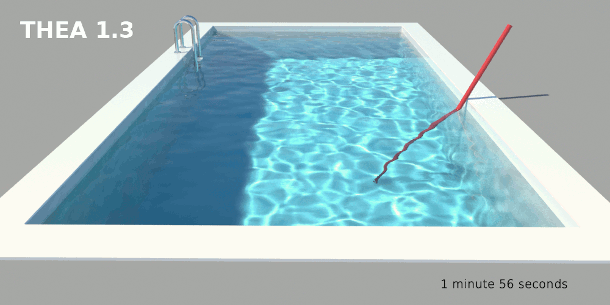Solid Iris Technologies unveils Thea Render 1.4
Solid Iris Technologies has unveiled Thea Render 1.4, the latest update to the hybrid renderer, adding previously CPU-only features to its Presto GPU-based render engine and improving CPU performance.
Displacement, motion blur and render channels on the GPU
This time around, Presto gets several features previously only available on the CPU, including displacement mapping, improved interactive rendering and improved motion blur, including a full set of motion definitions.
The Presto engine also now supports rendering in channels – not just those supported on the CPU, but extra channels including UV, Position, Mask and Shadow – and relighting.
Improved speed on the CPU, particularly for caustics
For non-Presto-users, it’s mainly speed. Performance of the CPU engines has been improved by “up to 25%”.
Caustics in the Adaptive BSD engine have also been sped up. Solid Iris doesn’t put an official figure on this, but there are times on the test scene shown at the top of this story.
Pricing and availability
Solid Iris hasn’t confirmed a release date for Thea Render 1.4 yet, but if it follows the same pattern as 1.3, it’ll probably be out in a couple of months.
Thea Render currently costs €295 (around $370) for the base software, including two node licences; or €320 ($400) for bundles with the 3ds Max, Cinema 4D, Rhino and SketchUp plugins. The Blender plugin is free.
In other news, the Modo plugin is being discontinued. Exiting users get either a refund or a copy of an alternative plugin and/or a €49 node licence.
And finally, the software is being ported to OpenCL as well as CUDA, which would enable users to use AMD as well as Nvidia GPUs to accelerate the Presto engine. No release date for the OpenCL port yet, though.

